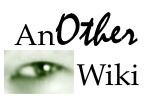Fae: Difference between revisions
No edit summary |
(Replaced Fae by Brian Froud with public domain image.) |
||
| Line 1: | Line 1: | ||
[[File: |
[[File:Fairy passage.jpg|400px|thumb|right|Fairy passage by [[Wikipedia:John_Anster_Fitzgerald|John Anster Fitzgerald]] (1823-1906)]] In the English Language fey means otherwordly, able to see the future, or touched in the head. In popular culture the fey, if recognized at all, are small, winged, humanoid, female creatures who are frequently portrayed in the nude. <ref name="Mythical Creatures Guide">http://www.mythicalcreaturesguide.com/page/Fae</ref> |
||
Fae' can also be used as a collective term instead of describing one specific race. Classifications for fae include that of disposition, Seelie Court (Light) and Unseelie Court (Dark), and whether they live as a community (Troop) or on their own (Solitary). There are fey in every culture when the term is stretched to its broadest definition.<ref name="Mythical Creatures Guide">http://www.mythicalcreaturesguide.com/page/Fae</ref> |
Fae' can also be used as a collective term instead of describing one specific race. Classifications for fae include that of disposition, Seelie Court (Light) and Unseelie Court (Dark), and whether they live as a community (Troop) or on their own (Solitary). There are fey in every culture when the term is stretched to its broadest definition.<ref name="Mythical Creatures Guide">http://www.mythicalcreaturesguide.com/page/Fae</ref> |
||
Revision as of 22:04, 27 March 2012

In the English Language fey means otherwordly, able to see the future, or touched in the head. In popular culture the fey, if recognized at all, are small, winged, humanoid, female creatures who are frequently portrayed in the nude. [1]
Fae' can also be used as a collective term instead of describing one specific race. Classifications for fae include that of disposition, Seelie Court (Light) and Unseelie Court (Dark), and whether they live as a community (Troop) or on their own (Solitary). There are fey in every culture when the term is stretched to its broadest definition.[1]
Types of Fae
In mythology and folklore 'fae' encompasses many magical creatures including, but not limited to:
- Brownie
- Dryad
- Dwarf
- Elf
- Fairy
- Gnome
- Goblin
- Gremlin
- Hob
- Imp
- Kelpie
- Knocker
- Kobold
- Nixie
- Nymph
- Ogre
- Phooka
- Pixie
- Redcap
- Selkie
- Sidhe (pronounced "shee")
- Sprite
- Tomte
- Troll
- Trow
- Will'o'Wisp
- Xana
Otherkin Subculture
Among the Otherkin subculture Fae is a type of otherkin and a general term for all types of creatures, including the list above. --Hollis Taylor (talk) 23:22, 26 March 2012 (PDT)
